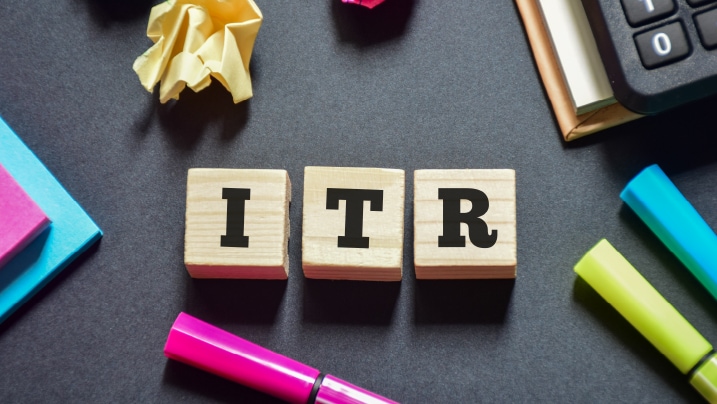CKYC Registry
-
Customer Service Contact us Service request Locate a branch
Find all the help you need
Scan the QR, get our app, and find help on your fingertips

Help CenterSupport topics, Contact us, FAQs and more
-
Login
Are you ready for an upgrade?
Login to the new experience with best features and services
-
Login
Are you ready for an upgrade?
Login to the new experience with best features and services
- Accounts
-
Deposits
IDFC FIRST Bank Deposits
View all Deposits -
Loans
IDFC FIRST Bank Loans
View all Loans - Wealth & Insure
-
Payments
IDFC FIRST Bank Payments
View all Payments -
Cards
IDFC FIRST Bank Cards
View all Cards - Blogs
- Corporate Account
-
Cash Management Services
IDFC FIRST Bank Cash Management Services
View all Cash Management Services - Supply Chain Finance
-
Corporate Lending
IDFC FIRST Bank Lending
View all -
Treasury
IDFC FIRST Bank Treasury
See more details - NBFC Financing
Support topics, Contact us, FAQs and more
- IDFC FIRST Bank Accounts
-
Savings Account
-
Corporate Salary
Account -
Senior Citizens
Savings Account -
First Power
Account -
Current Account
-
NRI Savings
Account -
TASC Institutional
Account -
Savings Account
Interest Calculator
- IDFC FIRST Bank Deposits
-
Fixed Deposit
-
Recurring Deposit
-
NRI Fixed Deposit
-
Safe Deposit Locker
-
FD Calculator
-
RD Calculator
- IDFC FIRST Bank Loans
-
Personal Loan
-
Consumer Durable
Loan -
Home Loan
-
Business Loan
-
Professional Loan
-
Education Loan
-
New Car Loan
-
Pre-owned Car Loan
-
Two Wheeler Loan
-
Pre-owned Two
Wheeler Loan -
Commercial Vehicle
Loan -
Gold Loan
-
Loan Against Property
-
Loan Against Securities
-
Easy Buy EMI card
-
Personal Loan
EMI Calculator -
Education Loan
EMI Calculator -
Home Loan
EMI Calculator
- IDFC FIRST Bank Wealth & Insure
-
FIRST Select
-
FIRST Wealth
-
FIRST Private
-
Mutual Funds
-
Sovereign Gold Bond
-
Demat Account
-
Term Insurance
-
Life Insurance
-
Health Insurance
-
General Insurance
-
Bonds
-
Loan Against
Securities -
Portfolio Management
Service
- IDFC FIRST Bank Payments
-
FASTag
-
Credit Card
Bill Payments -
UPI
-
Funds Transfer
-
Forex Services
-
Pay Loan EMI
- IDFC FIRST Bank Cards
-
Ashva :
Metal Credit Card -
Mayura :
Metal Credit Card -
FIRST Millennia
Credit Card -
FIRST Classic
Credit Card -
FIRST Select
Credit Card -
FIRST Wealth
Credit Card -
FIRST WOW!
Credit Card -
Deals
-
Debit Cards
-
Co-branded Cards
-
Credit Card
EMI Calculator -
FIRST Corporate
Credit Card -
FIRST Purchase
Credit Card -
FIRST Business
Credit Card
- Premium Metal Credit Cards
-
AshvaLifestyle1% Forex₹2,999
-
MayuraLifestyleZero Forex₹5,999
-
FIRST PrivateInvite Only
- Best for travellers
-
MayuraZero ForexMetal₹5,999
-
Ashva1% ForexMetal₹2,999
-
FIRST WOW!Zero ForexTravelLifetime Free
-
FIRST SWYPTravel OffersEMI₹499
-
FIRST Select1.99% ForexLifestyleLifetime Free
-
FIRST Wealth1.5% ForexLifestyleLifetime Free
-
Club VistaraTravelLifestyle₹4,999
-
IndiGo IDFC FIRST Dual Credit CardTravelLifestyle₹4,999
- Max benefits, Free for life
-
FIRST Classic10X RewardsShoppingNever Expiring Rewards
-
FIRST Millennia10X RewardsShoppingNever Expiring Rewards
-
FIRST Select10X RewardsLifestyle1.99% Forex
-
FIRST Wealth10X RewardsLifestyle1.5% Forex
-
FIRST WOW!RewardsTravelZero Forex
-
LIC ClassicRewardsInsuranceShopping
-
LIC SelectRewardsInsuranceShopping
- Reward Multipliers
-
AshvaLifestyleMetal₹2,999
-
MayuraLifestyleZero Forex₹5,999
-
FIRST ClassicNever Expiring RewardsShoppingLifetime Free
-
FIRST MillenniaNever Expiring RewardsShoppingLifetime Free
-
FIRST SelectNever Expiring RewardsLifestyleLifetime Free
-
FIRST WealthNever Expiring RewardsLifestyleLifetime Free
- Rewards & Credit on UPI
-
FIRST Power+FuelUPI₹499
-
FIRST PowerFuelUPI₹199
-
FIRST EA₹NVirtual1% Cashback₹499
-
FIRST DigitalVirtualUPI₹199
-
IndiGo IDFC FIRST Dual Credit CardUPITravelDual cards
- Fuel and Savings
-
FIRST PowerRewardsUPI₹199
-
FIRST Power+RewardsUPI₹499
-
LIC ClassicRewardsInsuranceShopping
-
LIC SelectRewardsInsuranceShopping
- Express and Flaunt
-
AshvaMetal1% Forex₹2,999
-
MayuraMetalZero Forex₹5,999
-
FIRST SWYPEMIOfferMAX₹499
-
FIRST MillenniaRewardsShoppingLifetime Free
- FD Backed rewarding Credit Cards for all
-
FIRST EA₹NVirtualCashback₹499
-
FIRST WOW!Zero ForexTravelLifetime Free
-
CreditPro Balance TransferTransfer & SaveReduce InterestPay Smartly
- IDFC FIRST Bank NRI Forex Solutions
-
Send money to India-Wire transfer
-
Send money to India-Digitally
-
Send money abroad
-
Max Returns FD (INR)
- IDFC FIRST Bank MSME Accounts
-
Platinum Current
Account -
Gold
Current Account -
Silver Plus
Current Account -
Merchant Multiplier
Account -
Agri Multiplier
Account -
TASC Institutional
Account -
Dynamic Current
Account -
World business
Account -
First Startup
Current Account
- IDFC FIRST Bank Business Loans
-
Business Loan
-
Professional Loan
-
Loan Against Property
-
Business Loan for Women
-
Working Capital Loan
-
Construction Equipment Loan
-
Machinery Loan
-
Healthcare Equipment Loan
- IDFC FIRST Bank Business Solutions
-
Payment Solutions
-
Tax Payments
-
Doorstep Banking
-
Point of Sale (POS)
-
Escrow Accounts
-
NACH
-
Payment Gateway
-
UPI
-
Virtual Accounts
-
As per amendment in the Income Tax Rules, PAN or Aadhaar are to be mandatorily quoted for cash deposit or withdrawal aggregating to Rupees twenty lakhs or more in a FY. Please update your PAN or Aadhaar. Kindly reach out to the Bank’s contact center on 1800 10 888 or visit the nearest IDFC FIRST Bank branch for further queries.
-
-
Most Searched
Sorry!
We couldn’t find ‘’ in our website
Here is what you can do :
- Try checking the spelling and search
- Search from below suggestions instead
- Widen your search & try a more generic keyword
Suggested
Get a Credit Card
Enjoy Zero Charges on All Commonly Used Savings Account Services
Open Account Now
Savings Account
Learn online ITR filing and how to pay income tax digitally
Summary: Filing ITR (income tax returns) allows you to claim tax deductions and get refunds on excess tax payments. Improve credit score and build credibility in financial transactions by learning how to file and pay income tax online.
The Income Tax Act of 1961 clearly outlines the need for every resident in India, who has an income, to pay income tax. Whether you are a minor, senior citizen, freelancer, or salaried employee, the rule does not change. Therefore, learning how to pay income tax online can be particularly important.
An individual's income tax depends on their income tax slab in a financial year.
How does one calculate the tax amount if your income goes from one tax slab to another within one financial year? How do we pay income tax online? Do we enrol in the services of a chartered accountant (CA), or can we do it ourselves?
In this article, we will answer these and other related questions. We will also discuss how to pay income tax online.
Why you should pay taxes
All governments need money to run the economy, and the funds come from the taxes it collects. In a note, the Government of India explains the importance of paying taxes.
Let's look at where the taxpayer's money is invested or spent.
- Building public infrastructure
The government builds public infrastructure with public money, i.e. the tax it collects. It is estimated that we need to spend $55 billion every year for the next 15 years – totalling $840 billion – to develop infrastructure for our urban population. - Launching health drives
Healthcare programmes, which account for many of India's annual budgets, are funded by tax collections. One such health programme, the Ayushman Bharat Yojana, has helped over 10 crore low-income families get health insurance of up to Rs 5 lakh for secondary and tertiary hospitalisation. - Strengthening defence
Our defence outlay is one of the biggest in the world, and that is because of the security threats we face. In the annual budget for 2023-24, the sector was allocated Rs 5,93,538 crore. This huge amount will be supported by the taxes we pay. - Paying off the national debt
All governments borrow from foreign creditors but paying it off with interest is also their responsibility. As of March-end 2022, India's external debt stood at $621 billion. The government would have to depend on tax collections to pay it off.
READ MORE
What happens if you don't pay taxes?
Avoiding ITR filing and concealing income comes under the umbrella of evasion of taxes. A few ways tax is evaded are -
- Concealing income to evade tax
- Not auditing accounts
- Not complying with TDS norms
- Wilfully evading tax
- Furnishing the wrong PAN, or not furnishing it at all
These are all offences under the Income Tax Act and can be penalised. These have been discussed below.
- Concealing income to evade tax
A penalty is charged under Section 271(C) if a person attempts to conceal their actual earnings. This ranges from 100% to 300% of the tax amount evaded. - Not auditing accounts
Under Section 44AB of the Income Tax Act, all businesses must get their accounts audited or furnish an audit report. If this is not done, the penalty will be 0.5% of total sales, or Rs 1.5 lakh, whichever is higher.
Under section 92E, any person/business to have executed an international or specific domestic transaction in the previous year must submit an accountant report by the due date. Failure to do so can attract a penalty of Rs 1 lakh or more. - Not complying with TDS norms
Employers collecting TDS have to furnish the collection account number (TAN). Failure to do so attracts a fine of Rs 10,000.
Not collecting TDS within the deadlines attracts a penalty of Rs 200 per day, which can be, at most, the TDS amount.
Inaccurate information or TDS returns can attract penalties ranging from Rs 10,000 to Rs 1 lakh. - Wilfully evading tax
Under Section 276C, under-reporting income to avoid tax amounts exceeding Rs 25 lakh invites imprisonment of at least six months, which can go up to seven years, along with a fine. - Wrong PAN
Inaccurate PAN details or not furnishing them attracts two types of penalties -
- The wrong PAN invites a penalty of Rs 10,000
- Not providing it will attract a penalty of 20% TDS instead of 10%
What is ITR filing, and why is it important?
Now we come to an integral part of paying income tax – filing your tax returns or ITR filing.
The ITR filing form is issued by the income tax department for taxpayers like us to declare the income, expenses, taxes paid, and investments made in tax-saving instruments under Section 80C (assuming you are following the old tax regime).
The department calculates your tax liability based on the taxpayer's income, and if excess tax has been paid during a year, then the person will receive a tax refund.
Everyone must go through the ITR filing process as mandated by law.
If you procrastinate, thinking it is time-consuming, you are depriving yourself of benefits and are liable for heavy penalties later.
What are the benefits of ITR filing?
Here are a few benefits of filing ITR that you should know about -
- You are liable for a tax refund in case of excess ITR filing. If the tax department finds excess tax to have been paid after deducting all applicable taxes, the extra amount is refunded within a few weeks. This amount is tax-free
- Income tax return filing is needed in all matters related to property. For instance, if you want to register immovable property, most states in India want the ITR filing records of the preceding three years as proof of tax compliance. In case your income is below the tax slabs, it is advisable to complete ITR filing voluntarily. It is easier to get the property registered
- Banks and credit card companies may request ITR filing records to prove solvency and tax compliance. For example, you want to apply for a home loan. The bank or NBFC you have approached will ask for ITR records. In case you are married, submitting the spouse's ITR filing records is also advisable because this enables the taxpayer to apply for a loan as a co-borrower. Another example is regarding credit companies and financial institutions. Before issuing a card, they are likely to demand proof of solvency, and willingness to repay, in the form of an ITR
- Timely ITR filing helps in tax planning, irrespective of whether your annual income requires you to file returns. It is related to adjusting for losses when calculating taxes. Under income tax laws, when calculating their tax liabilities, taxpayers can offset short-term and long-term capital losses incurred in business or other activities, both speculative and non-speculative, against tax dues. All such losses must be shown in the ITR for relevant assessment years. These cannot be shown for exemption in subsequent years. It means, avoiding ITR filing deprives taxpayers of reductions for prior losses
Note - By not undergoing the income tax return filing process, the taxpayer might lose their own money, which they earned legally, and have paid to the income tax department by mistake.
Can I file ITR after missing a few?
You can file missed ITRs for, at best, the preceding two years. That means if the current financial year is 2023-24, you can pay past ITRs up to the FY 2021-2022.
If you have pending ITRs before that, you have probably exposed yourself to punitive action by the income tax department. This is because no clause in the Income Tax Act allows you to file returns once you have breached the two-year timeframe.
As per experts, the income tax officer may show leniency if you can furnish convincing evidence showing you had a genuine reason for the lapse, such as -
- You suffered personal bereavement and hardships
- Your case is extraordinary
- Acts of God prevented you
As for missing the ITR filing deadline in the relevant year, the amended Finance Act of 2021 allows belated ITR filing three months before the end of that AY, or before the assessment is completed, whichever is earlier.
Forms and documents needed for the ITR filing form
The income tax department has several forms for taxpayers as per their income, occupation, and source of income. Here is a quick guide -
ITR-1
Also called "Sahaj", this form is for resident Indians (other than not ordinary residents) with a total income of up to Rs 50 lakh from salaries, one house property, other sources (e.g. interest.), and agricultural income up to Rs 5,000.
ITR-2
This form is for individuals' and HUFs' income through selling property or asset or earnings from other countries. You do not need this form if ITR-1 covers you.
ITR-3
This form is for individuals and HUFs with income from businesses or professions.
ITR-4 (Sugam)
This form is for Individuals, HUFs, and Firms (other than LLP) with income up to Rs 50 lakh from businesses and professions, coming under Sections 44AD, 44ADA or 44AE.
Apart from these, you must have the following documents handy during your ITR filing process-
- Bank and post office savings account passbook
- PPF account passbook
- Salary slips
- Aadhar Card
- PAN card
- Form 16 - This is a TDS certificate issued by your employer to provide details of your salary and TDS
- Form 16A - Certificate for TDS on interest received from FDs, RDs etc.
- Form 16B - Certificate for TDS on property sale income
- Form 16C - Certificate for TDS on the rent received by you, if any
- Form 26AS - Consolidated annual tax statement with all information on taxes deposited against your PAN
- Tax-saving investment certificates
- Home loan statement from the bank
How to calculate taxes if the income slab changes midyear
You may change jobs midyear, and your income can rise to a different income slab in one financial year. But that should not be a problem. You can still calculate your due taxes by adding up all your incomes to get your total gross income and then pay tax as per your income tax bracket.
1. What are the incomes you should consider?
Consider the same incomes that you would have if your salary had not changed.
- Salaries
- Income from house property (if any)
- Profits and gains of business or profession (if any)
- Capital gains (if any)
- Income from other sources (interest earnings, etc.)
Profit or loss carried forward from past years will be adjusted as per the rules.
2. What is gross total income? How is it different from total income?
The gross total income is the total of all the incomes shown in the previous questions, adjusted against any profit and loss brought forward from preceding years.
Total income is that, minus the deductions under Chapter VIA. It is this income that is taxed.
3. My child settled abroad and owns a house property in India that has been let out. I collect the rent. Will I be taxed on this income?
Tax on rental income is levied on house owners. Since you are not the owner, you won't be taxed.
4. How to compute total tax liability?
Once you get the total income (i.e. the taxable income), subtract the various deductions under Chapter VIA and rebates, and add the surcharge and the cess (education and health).
The amount remaining is tax liability.
5. What is a surcharge?
A surcharge is an additional tax levied on taxpayers as a percentage of the income tax. The amount varies with the situation.
Features and benefits of the new e-Filing portal
- ITR processing
The new portal is user-friendly and enables instant ITR filing. The biggest advantage is that it will lead to quick refunds. - Free ITR preparation software
The ITR preparation software has been developed for this purpose and is free for taxpayers. The software is for ITR-1, ITR-2, and ITR-4, for now. The software for ITR-3, ITR-5, ITR-6, ITR-7 is awaited. - Interactive questions
The software has an interactive questions feature, simplifying the e-filing process. - Call centre services
The new portal is backed by a call centre that responds immediately to taxpayers' queries. A detailed FAQ, tutorials, videos, and chatbot/live agents boost the service. - Dashboard facility
All interactions, uploads, and pending/follow-up actions can be tracked on a single dashboard. - Easy payment
Taxpayers are offered multiple payment options, such as RTGS, NEFT, credit card, UPI, and net banking through bank accounts. This enables easy tax payment. - Pre-filed ITRs
Pre-filing of the ITR forms has been enabled for certain incomes related to salary, house property, business/profession, etc. But this comes into play after the taxpayer uploads TDS and SFT statements.
Also read - Different types of income and the tax you need to pay
How to pay income tax online
For a salaried person, your employer pays income tax on your behalf by way of TDS. The employer's legal obligation is to deposit the tax amount deducted monthly from your salary with the income tax department.
However, if you are self-employed or a freelancer, you may have been taking a CA's help or using other sources to pay your income tax.
If you fall in the above category, you can now take the self-assessment route and pay your taxes, made easy by filing under "Challan 280".
The challan, or form, is available on the income tax department's website and can be done in two ways -
- You can download the form, fill it in, and pay your taxes offline via an authorised bank
- You can pay the income tax online with challan 280, from home
Let us discuss the second option and see the steps involved.
Step 1
Go to the website of the central securities depository, NSDL, at PAN card issuance - online, printing, dispatch (protean-tinpan.com)
Step 2
On the main page, locate and click the "Services" tab; you will get a drop-down menu.
Step 3
This menu will have the option - "e-payment - Pay Taxes Online"; click it
Step 4
Once you come to the 'e-Payment of Taxes' page, you will find a box "Challan No/ITNS 280" among the various options; click on the "Proceed" button in this box.
Step 5
This will take you to the next page, which is Challan 280. It has various options, including the type of applicable tax you are looking for.
There are two types of tax here -
- Income Tax (other than companies), which is what you are looking for
- The other is Corporation Tax, for companies
Step 7
Select the option "(0021) Income Tax (other than companies) for paying income tax" and mark your choice in the adjacent circle.
Step 8
Below the "Tax applicable" tab are various income tax-related options under "Type of Payment."
The options are "Advance Tax", "Surtax", "Tax on Distributed Profit", "Tax on Distributed Income", "Self-Assessment Tax", and "Tax on Regular Assessment".
Select "Self-Assessment Tax."
Step 9
- Next, you have to select your payment mode
- You can pay using a Net banking facility or debit card. (At the time of writing this report, the debit card option was not in operation)
- Select the net banking option, which has a drop-down menu with the names of a few designated banks
- You have to click the bank name of your choice
- If your bank is on OLTAS (the income tax department's "Online Tax Accounting System"), please note that these have now migrated to the e"-Filing" portal of the income tax department. Taxpayers are advised to use the e-Pay Tax facility to pay income tax directly if using these banks
Step 10
You also have to enter your Permanent Account Number (PAN) and the relevant Assessment Year. (Explained below)*
Step 11
You must fill in your address, district, state, pin code, e-mail ID, and mobile number.
Step 12
After this, you must enter the Captcha Code in the relevant space provided.
Step 13
Once you are done, click on the "Proceed" option
Step 14
This will finally lead you to the "e-Payment page", where you can pay your income tax.
*The Financial Year (FY) and the Assessment Year (AY) both follow the same period - April 1 of one year to March 31 of the next period.
So, what differentiates them?
Here is an example to explain the difference - When you pay your taxes sometime before the year's due date, you do it for the Financial Year 2022-23, making 2023-24 the Assessment Year.
Proof of payment of income tax
The proof of tax paid is a counterfoil of the challan you have filled in when making the payment. This counterfoil is generated once you complete the ITR filing process and pay your tax online on the e-payment page.
It contains details such as the Challan Identification Number (CIN), the date of payment, the amount paid, and the seven-digit BSR code of the bank branch where you have deposited the tax amount.
The CIN is an acknowledgement that you made a payment. The information in the CIN will be required in future references, especially while income tax return filing.
You can also contact your bank if you want the challan counterfoil regenerated. Besides this, you can verify the status of the challan here.
Correction of mistakes in challans
There is always a possibility that you need to correct some information in the challan. In that case, you can request to correct it.
While making corrections, you can make changes in the following areas -
- Assessment Year
- TAN (Tax Deduction and Collection Number) or the PAN, whichever is being used
- Nature of the payment
- Major head code and minor head code (see below)
- Total amount
Major Head codes are numbers for two types of taxpayers -
- 'Income tax paid by companies' is Code 0020
- 'Income tax paid by non-corporate taxpayers' is Code 0021
Minor Head codes, on the other hand, are code numbers for the various types of taxes, as explained here -
- Advance Tax – Code number 100
- Surtax – Code number is 102
- Tax on Distributed Profit – Code number is 106
- Tax on Distributed Income – Code number is 107
- Self-Assessment Tax – Code number is 300
- Tax on Regular Assessment – The code number is 400
In all probability, the self-assessment tax will be relevant for you, unless your tax liability is more than Rs 10,000, in which case you have to file an advance tax.
As for the changes, those can be made by the relevant banks. The banks have seven days from the day the challan was deposited to make changes related to TAN, PAN, the assessment year, and the total amount.
If the issue is with major and minor head codes, or the nature of the payment, the banks are given three months to make the necessary changes.
Also read - Save tax with your study loan: Section 80E deduction of income tax act
Conclusion
You can pay your income tax online, which saves you the trouble and expense of hiring a chartered accountant. You can also complete ITR filing online using government-approved software. To make things even smoother, ensure you have a savings account with netbanking facility. IDFC FIRST Bank offers several types of savings accounts to choose from, each with interesting and beneficial features like monthly interest credits, high interest rates, cashbacks and offers on debit cards, and more.
It is ideal to complete the ITR filing process, even if your income is not taxable. It is proof of statement of income and is needed for getting credit cards, loans, property registration, etc.
It pays to be more vigilant with your taxes and learn how to pay income tax online to save yourself the hassle of doing it in person.
Disclaimer
The contents of this article/infographic/picture/video are meant solely for information purposes. The contents are generic in nature and for informational purposes only. It is not a substitute for specific advice in your own circumstances. The information is subject to updation, completion, revision, verification and amendment and the same may change materially. The information is not intended for distribution or use by any person in any jurisdiction where such distribution or use would be contrary to law or regulation or would subject IDFC FIRST Bank or its affiliates to any licensing or registration requirements. IDFC FIRST Bank shall not be responsible for any direct/indirect loss or liability incurred by the reader for taking any financial decisions based on the contents and information mentioned. Please consult your financial advisor before making any financial decision.
The features, benefits and offers mentioned in the article are applicable as on the day of publication of this blog and is subject to change without notice. The contents herein are also subject to other product specific terms and conditions and any third party terms and conditions, as applicable. Please refer our website www.idfcfirstbank.com for latest updates.























